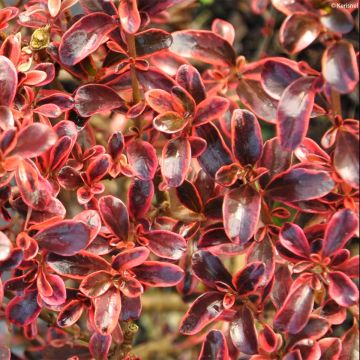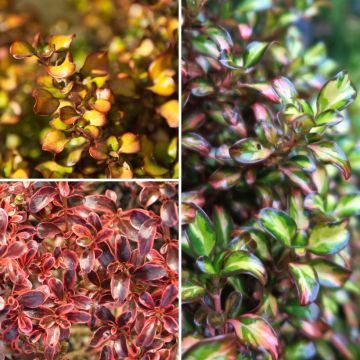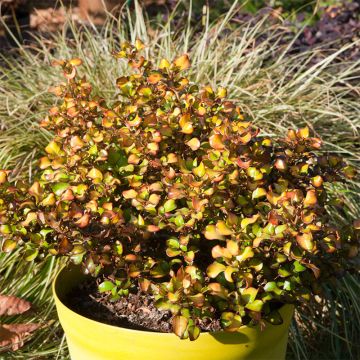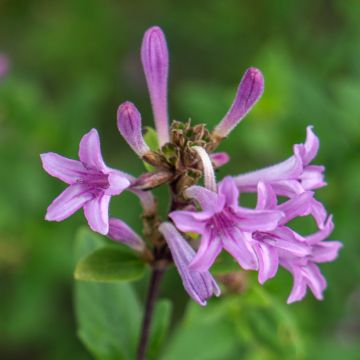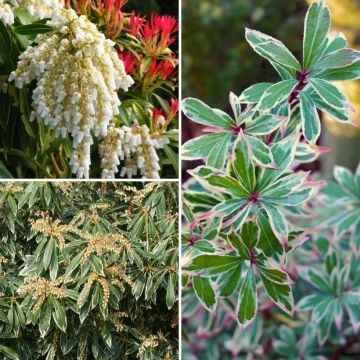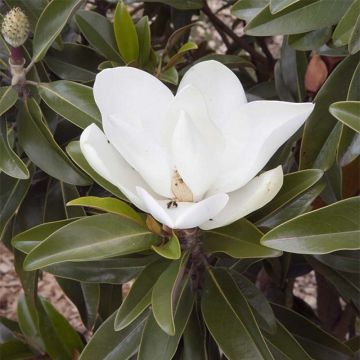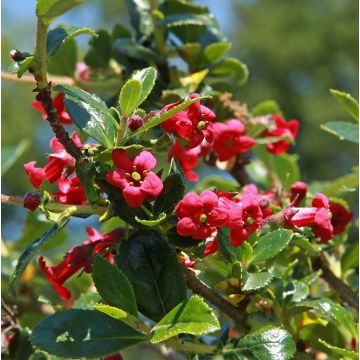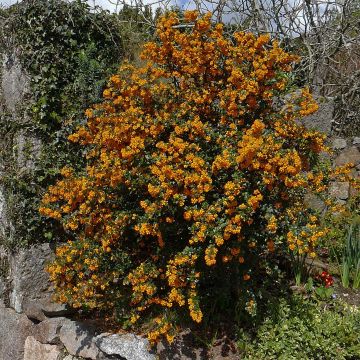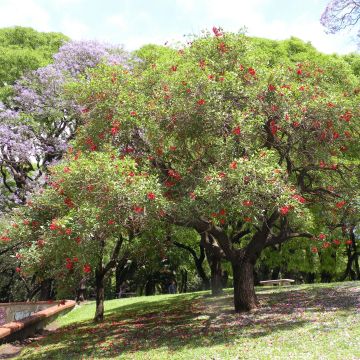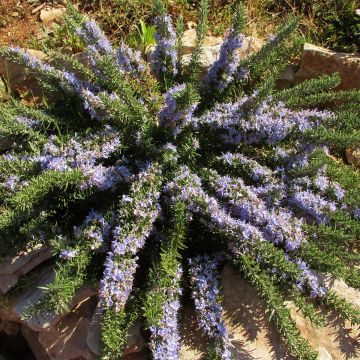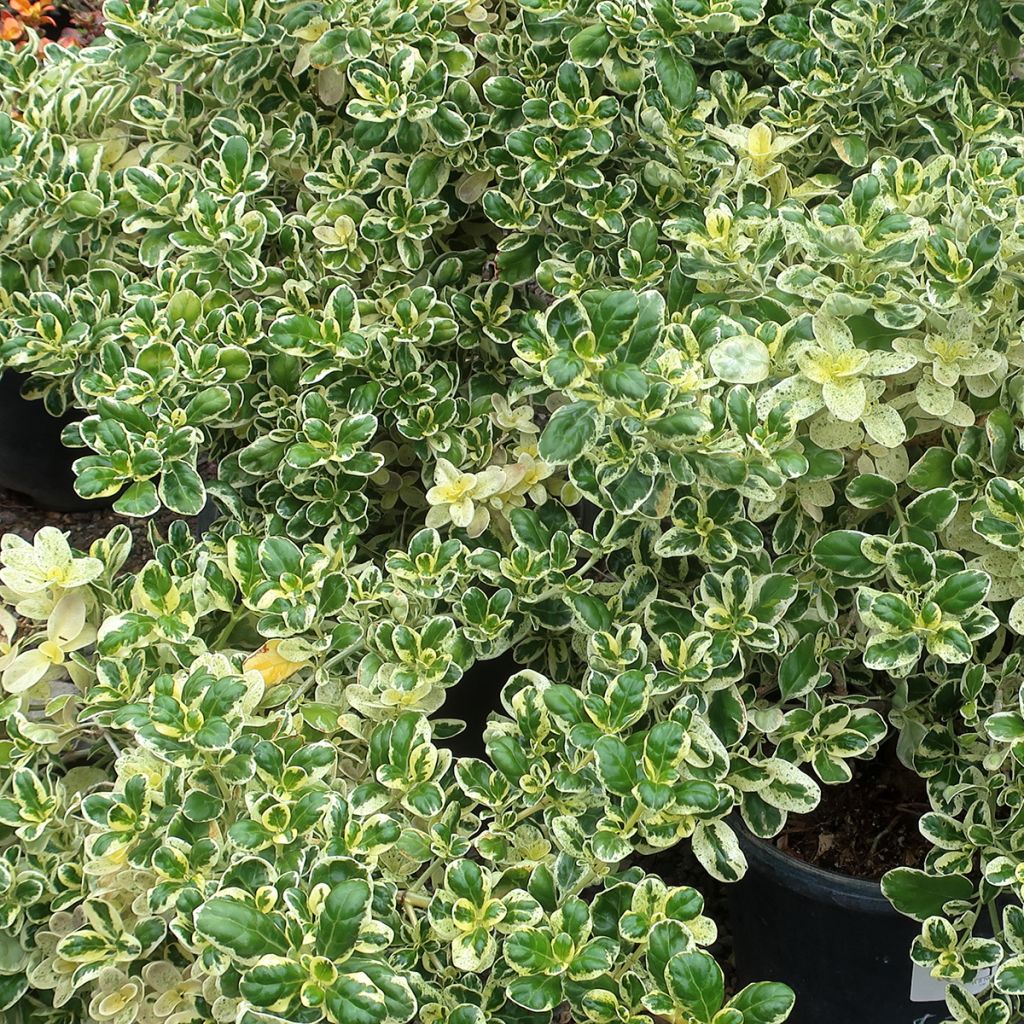

Coprosma repens Marble Queen
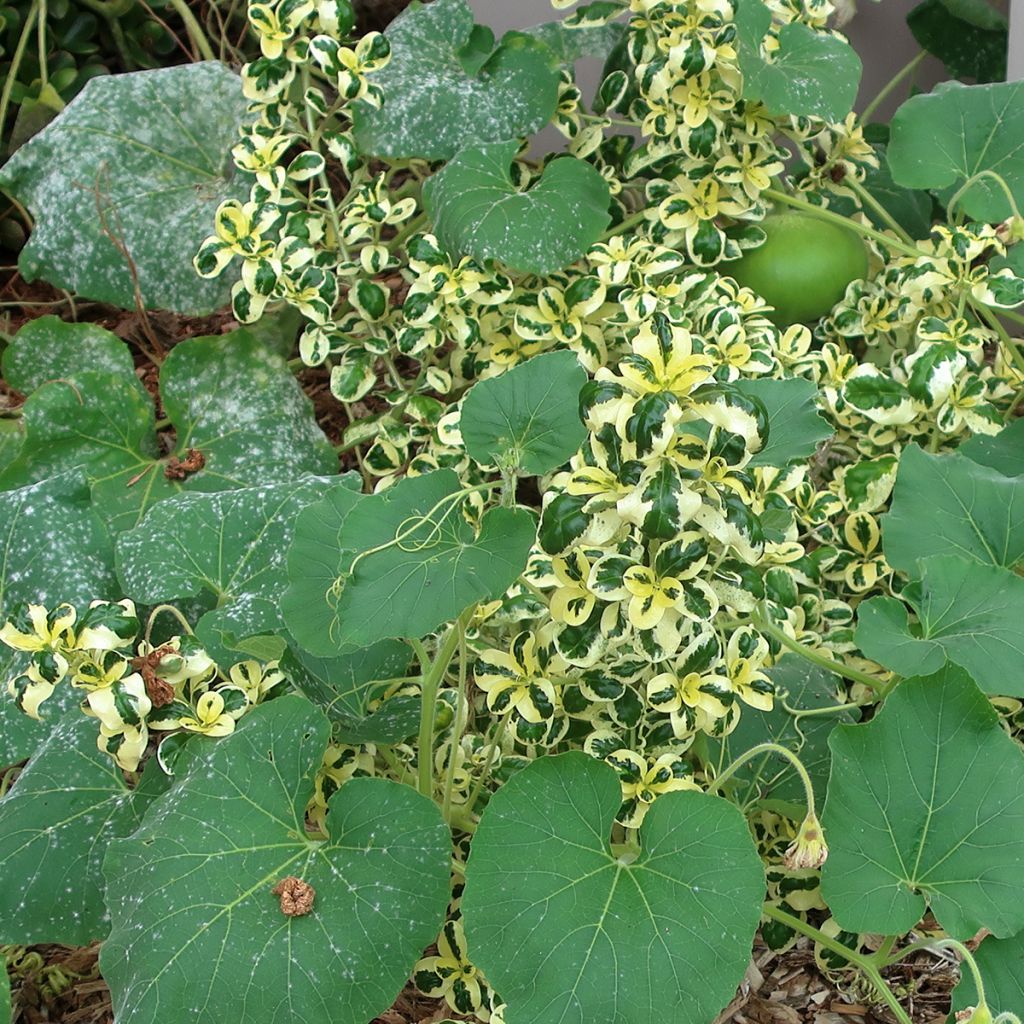

Coprosma repens Marble Queen
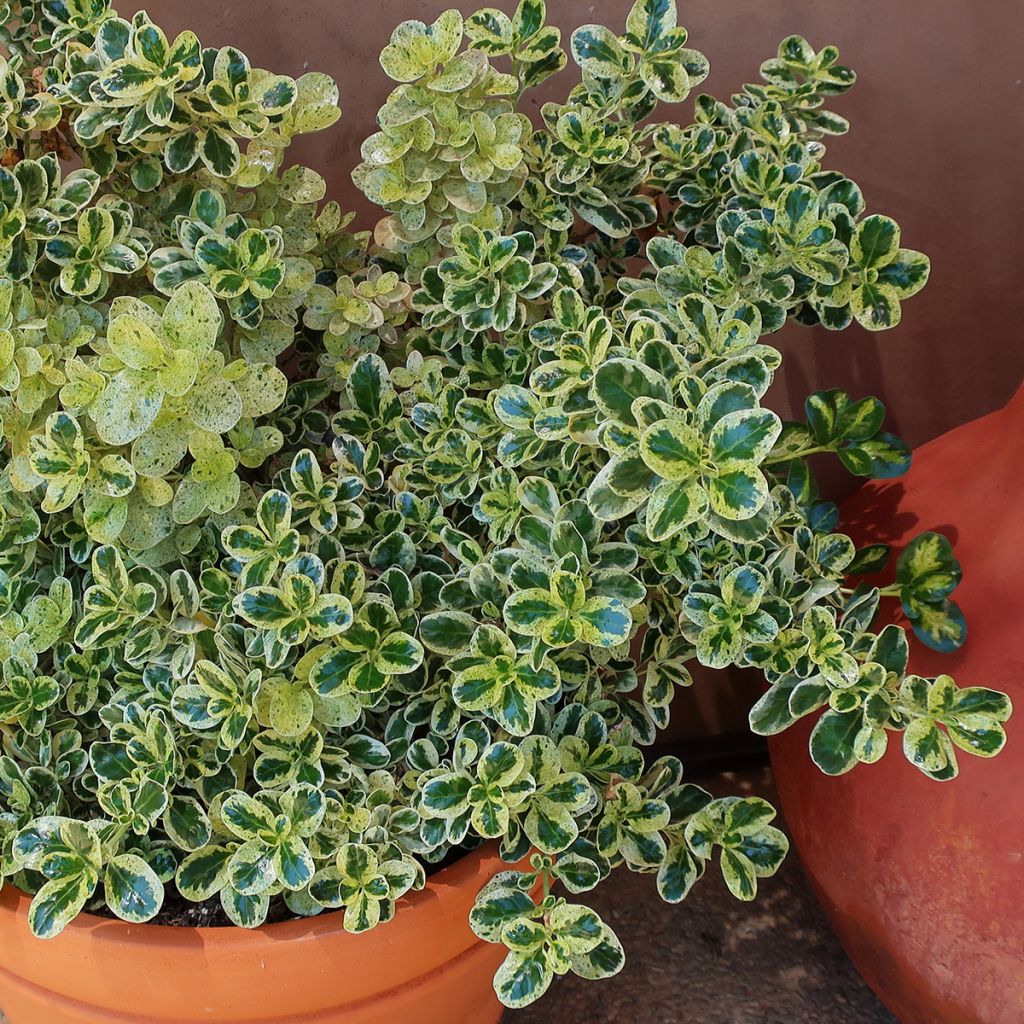

Coprosma repens Marble Queen
Coprosma repens Marble Queen
Coprosma x repens Marble Queen
Mirror Plant, Looking-glass plant
Why not try an alternative variety in stock?
View all →This plant carries a 24 months recovery warranty
More information
We guarantee the quality of our plants for a full growing cycle, and will replace at our expense any plant that fails to recover under normal climatic and planting conditions.
From €5.90 for pickup delivery and €6.90 for home delivery
Express home delivery from €8.90.
Does this plant fit my garden?
Set up your Plantfit profile →
Description
Coprosma 'Marble Queen' is a small bush with evergreen foliage variegated with cream-white and extremely decorative all year round. Originally from New Zealand, it is not very hardy, but drought-resistant and very tolerant to sea sprays. Therefore, it is a perfect bush for coastal gardens or very mild climates when planted in the ground. Its pretty, shiny and tough leaves in a mixture of deep green and cream white, have a bright appearance that will illuminate a plant bed all year round. In colder regions, this small bush with an upright habit and dense foliage will adorn the terrace or balcony throughout the summer and will spend the winter protected from frost.
The Coprosma genus consists of 90 to 100 species of evergreen bushes and small trees that are mostly native to New Zealand. These plants belong to the Rubiaceae family, which includes, for example, the Coffee plant and the Gardenia. Recently introduced to the European horticultural market, these bushes, known as mirror plants, develop extremely shiny foliage where light and colours play wonderfully. From their origins, these not very hardy plants have retained a preference for dry and warm climates, as well as poor and well-drained soils. Hybrids and cultivars like this one are not very hardy and suffer from temperatures below -4°C. Therefore, their cultivation in the ground will be limited to coastal areas without severe frosts.
Coprosma 'Marble Queen' is a variety derived from the species Coprosma repens. It has an upright and dense habit, reaching a height and width of about 1.50m (4 ft 11 in) at maturity after 10 to 20 years. It develops evergreen foliage composed of small opposite, entire, ovate leaves with rounded tips. They are very tough and their texture is shiny, increasing their attractiveness. Their bright green is variegated with cream-white in an irregular margin, creating a very attractive visual effect in all seasons. This male produces small yellow flowers in summer, which are quite insignificant and consequently do not give decorative berries like the female.
Coprosma grows in neutral to acidic, light, and well-drained soil. Once well-rooted, it tolerates drought quite well. It is also resistant to wind and sea sprays.
Coprosma 'Marble Queen' is a very popular bush in New Zealand, thanks to its decorative aspect, adaptation to the local climate, and very good resistance to diseases and insects, except perhaps scale insects. Its variegation will be even more striking when combined in a bed with a purple plant, such as the Pittosporum tenuifolium Purpureum, which is also well adapted to coastal areas and has beautifully wavy dark foliage. With its greyish foliage, the Teucrium fruticans will also be a good companion, especially since its blue flowering lasts a long time. The Common Myrtle, with its beautiful dark green, glossy foliage, aromatic when crushed, is also interesting in this type of situation.
Report an error about the product description
Coprosma repens Marble Queen in pictures
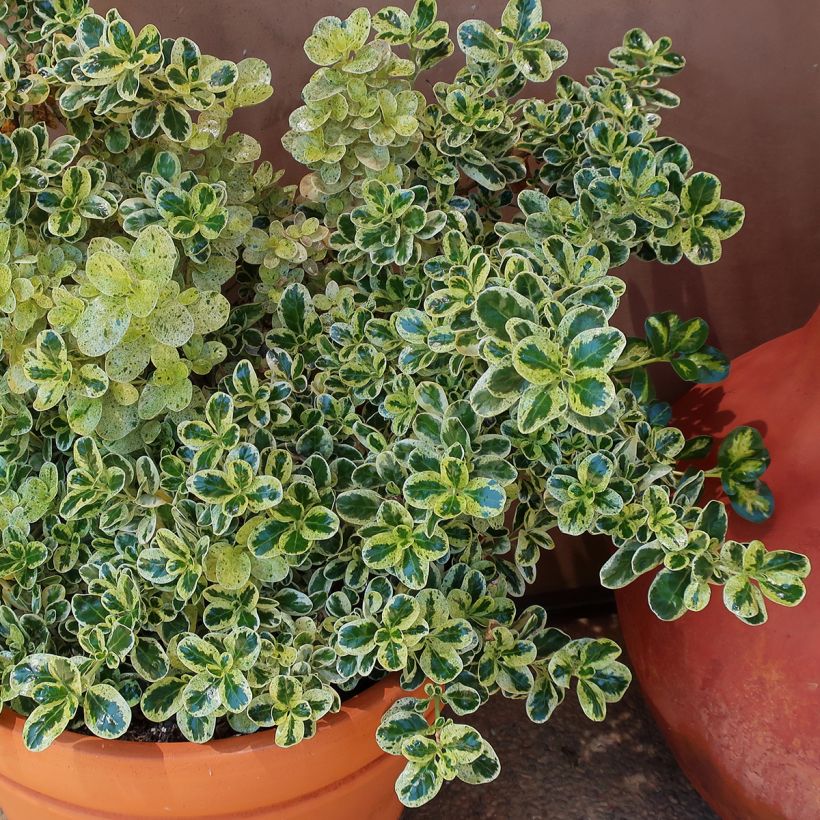

Plant habit
Flowering
Foliage
Botanical data
Coprosma
x repens
Marble Queen
Rubiaceae
Mirror Plant, Looking-glass plant
Cultivar or hybrid
Other Coprosma
Planting and care
Coprosma 'Marble Queen' thrives in open ground in coastal regions spared from frost. It is best planted in spring, in full sun or partial shade, with autumn colours being more intense in the sun. It is a plant that tolerates drought and poor soils but dislikes the presence of limestone in the soil. Plant it in light, well-drained soil, for example a mixture of leaf compost, ericaceous soil, and river sand. The planting hole should be twice the size of the root ball. Water regularly to aid in establishment. Once well established, the Coprosma can do without watering in summer.
Pruning is not essential, if necessary prune sparingly between April and August. Water plants in containers regularly. In cold regions, bring them indoors to a cool, bright, minimally heated room before the arrival of heavy frost.
Modern hybrids seem to be less prone to attacks from scale insects and sooty mould. However, plants grown in greenhouses will be more exposed to these pests and diseases.
Planting period
Intended location
Care
This item has not been reviewed yet - be the first to leave a review about it.
Evergreen shrubs
Haven't found what you were looking for?
Hardiness is the lowest winter temperature a plant can endure without suffering serious damage or even dying. However, hardiness is affected by location (a sheltered area, such as a patio), protection (winter cover) and soil type (hardiness is improved by well-drained soil).

Photo Sharing Terms & Conditions
In order to encourage gardeners to interact and share their experiences, Promesse de fleurs offers various media enabling content to be uploaded onto its Site - in particular via the ‘Photo sharing’ module.
The User agrees to refrain from:
- Posting any content that is illegal, prejudicial, insulting, racist, inciteful to hatred, revisionist, contrary to public decency, that infringes on privacy or on the privacy rights of third parties, in particular the publicity rights of persons and goods, intellectual property rights, or the right to privacy.
- Submitting content on behalf of a third party;
- Impersonate the identity of a third party and/or publish any personal information about a third party;
In general, the User undertakes to refrain from any unethical behaviour.
All Content (in particular text, comments, files, images, photos, videos, creative works, etc.), which may be subject to property or intellectual property rights, image or other private rights, shall remain the property of the User, subject to the limited rights granted by the terms of the licence granted by Promesse de fleurs as stated below. Users are at liberty to publish or not to publish such Content on the Site, notably via the ‘Photo Sharing’ facility, and accept that this Content shall be made public and freely accessible, notably on the Internet.
Users further acknowledge, undertake to have ,and guarantee that they hold all necessary rights and permissions to publish such material on the Site, in particular with regard to the legislation in force pertaining to any privacy, property, intellectual property, image, or contractual rights, or rights of any other nature. By publishing such Content on the Site, Users acknowledge accepting full liability as publishers of the Content within the meaning of the law, and grant Promesse de fleurs, free of charge, an inclusive, worldwide licence for the said Content for the entire duration of its publication, including all reproduction, representation, up/downloading, displaying, performing, transmission, and storage rights.
Users also grant permission for their name to be linked to the Content and accept that this link may not always be made available.
By engaging in posting material, Users consent to their Content becoming automatically accessible on the Internet, in particular on other sites and/or blogs and/or web pages of the Promesse de fleurs site, including in particular social pages and the Promesse de fleurs catalogue.
Users may secure the removal of entrusted content free of charge by issuing a simple request via our contact form.
The flowering period indicated on our website applies to countries and regions located in USDA zone 8 (France, the United Kingdom, Ireland, the Netherlands, etc.)
It will vary according to where you live:
- In zones 9 to 10 (Italy, Spain, Greece, etc.), flowering will occur about 2 to 4 weeks earlier.
- In zones 6 to 7 (Germany, Poland, Slovenia, and lower mountainous regions), flowering will be delayed by 2 to 3 weeks.
- In zone 5 (Central Europe, Scandinavia), blooming will be delayed by 3 to 5 weeks.
In temperate climates, pruning of spring-flowering shrubs (forsythia, spireas, etc.) should be done just after flowering.
Pruning of summer-flowering shrubs (Indian Lilac, Perovskia, etc.) can be done in winter or spring.
In cold regions as well as with frost-sensitive plants, avoid pruning too early when severe frosts may still occur.
The planting period indicated on our website applies to countries and regions located in USDA zone 8 (France, United Kingdom, Ireland, Netherlands).
It will vary according to where you live:
- In Mediterranean zones (Marseille, Madrid, Milan, etc.), autumn and winter are the best planting periods.
- In continental zones (Strasbourg, Munich, Vienna, etc.), delay planting by 2 to 3 weeks in spring and bring it forward by 2 to 4 weeks in autumn.
- In mountainous regions (the Alps, Pyrenees, Carpathians, etc.), it is best to plant in late spring (May-June) or late summer (August-September).
The harvesting period indicated on our website applies to countries and regions in USDA zone 8 (France, England, Ireland, the Netherlands).
In colder areas (Scandinavia, Poland, Austria...) fruit and vegetable harvests are likely to be delayed by 3-4 weeks.
In warmer areas (Italy, Spain, Greece, etc.), harvesting will probably take place earlier, depending on weather conditions.
The sowing periods indicated on our website apply to countries and regions within USDA Zone 8 (France, UK, Ireland, Netherlands).
In colder areas (Scandinavia, Poland, Austria...), delay any outdoor sowing by 3-4 weeks, or sow under glass.
In warmer climes (Italy, Spain, Greece, etc.), bring outdoor sowing forward by a few weeks.

































